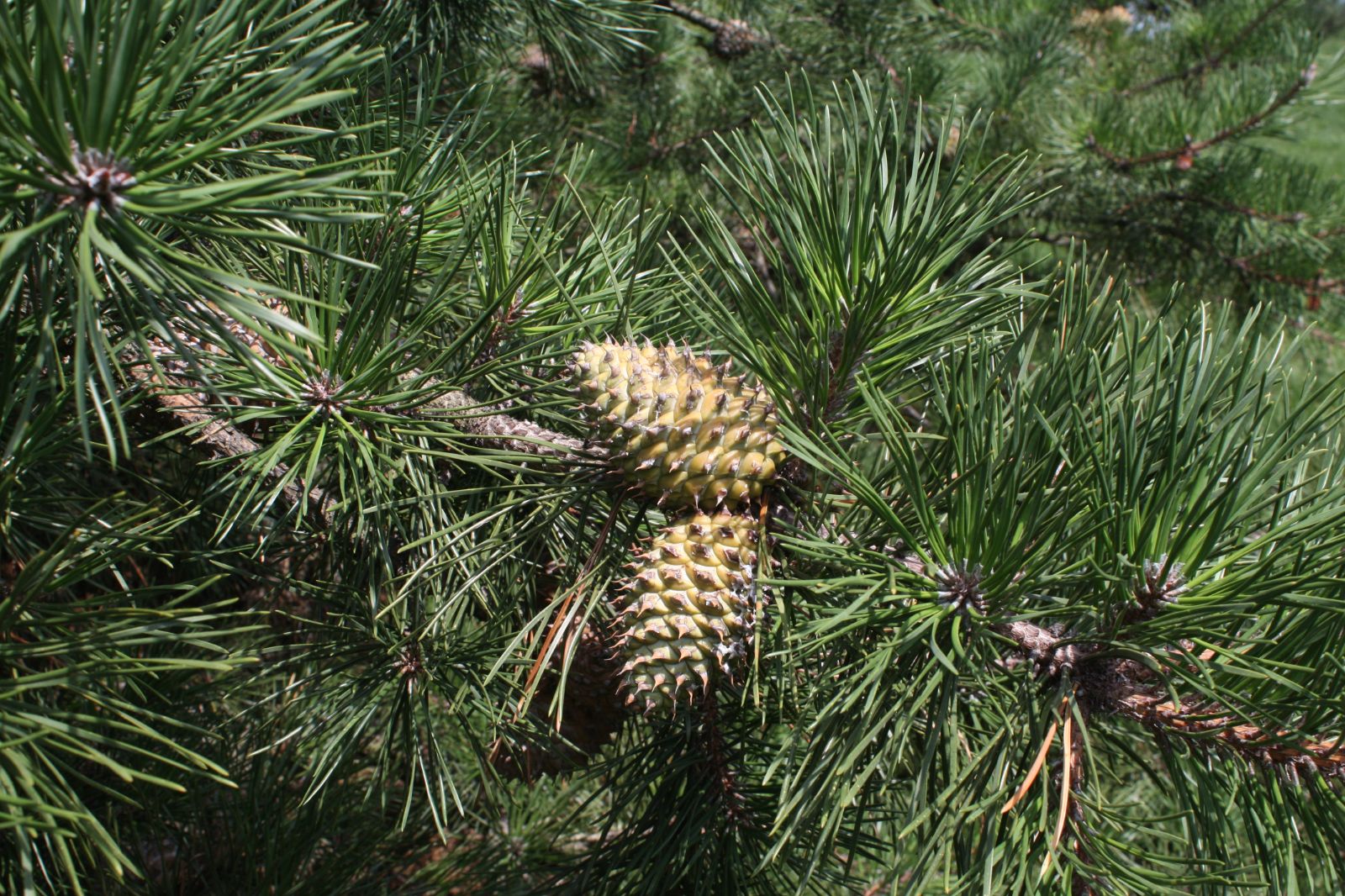Pinus pungens
Credits
Article from Bean's Trees and Shrubs Hardy in the British Isles
Recommended citation
'Pinus pungens' from the website Trees and Shrubs Online (treesandshrubsonline.
Genus
Common Names
- Table-mountain Pine
Other taxa in genus
- Pinus albicaulis
- Pinus arizonica
- Pinus armandii
- Pinus attenuata
- Pinus ayacahuite
- Pinus balfouriana
- Pinus banksiana
- Pinus bhutanica
- Pinus brutia
- Pinus bungeana
- Pinus canariensis
- Pinus cembra
- Pinus cembroides
- Pinus chiapensis
- Pinus contorta
- Pinus coulteri
- Pinus culminicola
- Pinus densata
- Pinus densiflora
- Pinus devoniana
- Pinus durangensis
- Pinus echinata
- Pinus edulis
- Pinus elliottii
- Pinus engelmannii
- Pinus eremitana
- Pinus flexilis
- Pinus gerardiana
- Pinus greggii
- Pinus × hakkodensis
- Pinus halepensis
- Pinus hartwegii
- Pinus heldreichii
- Pinus henryi
- Pinus × holfordiana
- Pinus hwangshanensis
- Pinus jeffreyi
- Pinus johannis
- Pinus koraiensis
- Pinus lambertiana
- Pinus leiophylla
- Pinus longaeva
- Pinus massoniana
- Pinus maximartinezii
- Pinus monophylla
- Pinus montezumae
- Pinus monticola
- Pinus morrisonicola
- Pinus mugo
- Pinus muricata
- Pinus nelsonii
- Pinus nigra
- Pinus oocarpa
- Pinus orizabensis
- Pinus palustris
- Pinus parviflora
- Pinus patula
- Pinus peuce
- Pinus pinaster
- Pinus pinceana
- Pinus pinea
- Pinus ponderosa
- Pinus pseudostrobus
- Pinus pumila
- Pinus quadrifolia
- Pinus radiata
- Pinus remota
- Pinus resinosa
- Pinus rigida
- Pinus roxburghii
- Pinus sabiniana
- Pinus serotina
- Pinus sibirica
- Pinus strobiformis
- Pinus strobus
- Pinus sylvestris
- Pinus tabuliformis
- Pinus taeda
- Pinus taiwanensis
- Pinus teocote
- Pinus thunbergii
- Pinus torreyana
- Pinus virginiana
- Pinus wallichiana
- Pinus wangii
- Pinus yunnanensis
A tree usually 20 to 40 ft high; young shoots reddish brown, shining, not downy, very stiff and sturdy, with the crowded leaves of the lateral branches more or less erect; bark scaly on young trees; buds cylindrical, 3⁄4 to 1 in. long, very resinous. Leaves in twos, falling the third year; very rigid and sharply pointed, deep green, 2 to 3 in. long, somewhat spirally curved; leaf-sheath 1⁄4 in. long, persistent. Cones usually in clusters of three or more, each cone 3 or 31⁄2 in. long, 2 to 21⁄2 in. wide at the base; the boss of each scale terminated by a broad, hooked spine.
Native of eastern N. America in the Appalachians; introduced in 1804. This pine retains the cones on its branches frequently fifteen or twenty years. It is one of the least ornamental of pines in cultivation and its timber is of little value. In the group of two-leaved pines with persistent leaf-sheaths and cylindrical resinous buds, it is distinguished by the stiff, spine-tipped leaves and bright red brown branchlets.
This rare pine is represented at Leonardslee, Sussex, by two trees, the larger measuring 57 × 33⁄4 ft (1969).
From the Supplement (Vol. V)
The specimen at Leonardslee, Sussex, measures 82 × 4 ft (1984).


